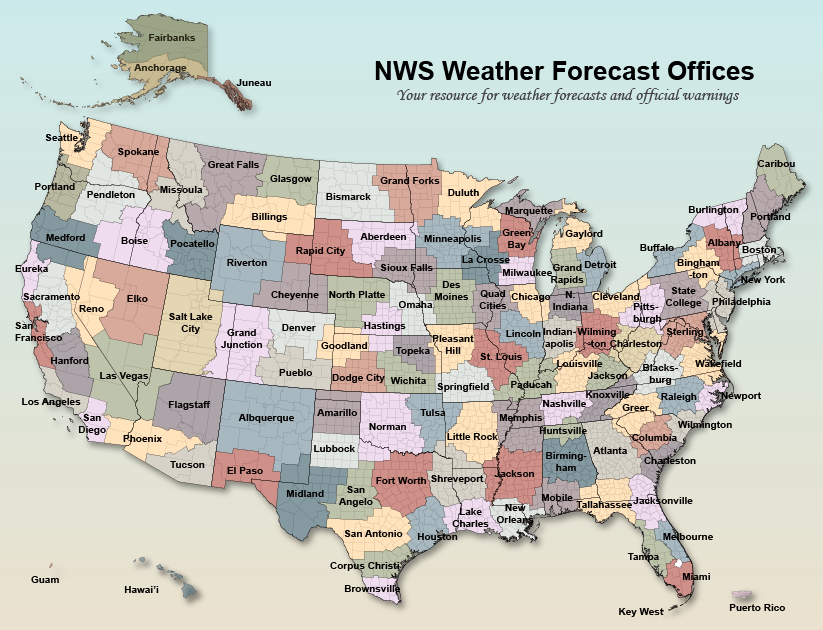The NWS Modernization and Associated Restructuring - A Retrospective (Part 2) - National Weather Service Heritage

The NWS Modernization and Associated Restructuring - A Retrospective (Part 2)
By Dan Valle (dan.valle@noaa.gov) and Chris Geelhart (chris.geelhart@noaa.gov)This is part 2 of a 2-part story about the Modernization and Associated Restructuring of the NWS. Click here to read part 1.
Implementing the Modernization and Associated Restructuring (MAR) was a monumental task. NWS technology had become obsolete, and would be replaced by several new components. Nearly every NWS activity would change in some way. Furthermore, the NWS needed to modernize with no service disruption.
A Transition Program Office was created to plan and manage the implementation of MAR. The transition plan was a tiered structure consisting of four levels. The top level was the Strategic Plan, which provided the fundamental goals and objectives. The next tier consisted of the National Implementation Plan, which established a planning framework and general strategies. The third tier consisted of Regional Transition Plans, which were prepared by each Regional office. The Regional Plans set a course for achieving the MAR’s goals while accounting for unique weather conditions that occur within each region. The final tier were Site Implementation Plans. These plans provided detailed actions and schedules to accomplish MAR for each Weather Forecast Office (WFO).

Interactive map: https://arcg.is/vGbjL
Prior to the modernization, the NWS operated a two-tier office structure. There were 52 Weather Service Forecast Offices, roughly one per state (though larger states had more), along with 204 smaller Weather Service Offices that primarilyy took weather observations and issued severe weather warnings. The staffing was a mixture of roughly 1/3 meteorologists, and 2/3 meteorological technicians. The modernization plan envisioned 115 (now 122) Weather Forecast Offices, each with about the same functions. Staffing was to be reconfigured to be mostly degreed meteorologists, with a smaller contingent of meteorological technicians.
Public Law 100-685, which authorized the MAR activities, established the initial requirements for measuring service improvement. This was further refined in 1992. Public Law 102-567 stated:
...special measures to test, evaluate, and demonstrate key elements of the modernized National Weather Service operations prior to national implementation, including a multistation operational demonstration which tests the performance of the modernization in an integrated manner for a sustained period...
The Modernization and Associated Restructuring Demonstration (MARD) was established to evaluate these elements. The MARD would test several items:
- Validate the concept of the WFO, moving away from the existing two-tiered office structure where only some offices were forecast offices.
- Refine operation procedures and resolve implementation issues.
- Demonstrate that the quality of forecasts and warnings was not degraded in the process.
The MARD was made up of a number of offices in the central U.S.: Hastings, NE; Goodland, Dodge City, Wichita and Topeka, KS; Pleasant Hill/Kansas City, MO; Norman and Tulsa, OK. River Forecast Centers in Pleasant Hill and Tulsa also participated. This region was selected due to the high incidence of severe weather. The results would be used to verify that closing the smaller offices would not have a detrimental effect.
With the success of the MARD, the overall modernization was completed in 2000, at a total cost of approximately $4.5 billion. Since then, upgrades have continued. Doppler radars have been upgraded to dual polarization technology and are being refurbished to allow continued operations well into the future. The AWIPS computer network undergoes regular upgrades to improve processing of new and larger data sets. The trend toward Impact-Based Decision Support Services (IDSS) for emergency management and public safety entities puts the staff in more frequent contact with other core partners, occasionally on site, to aid their key decisions.
